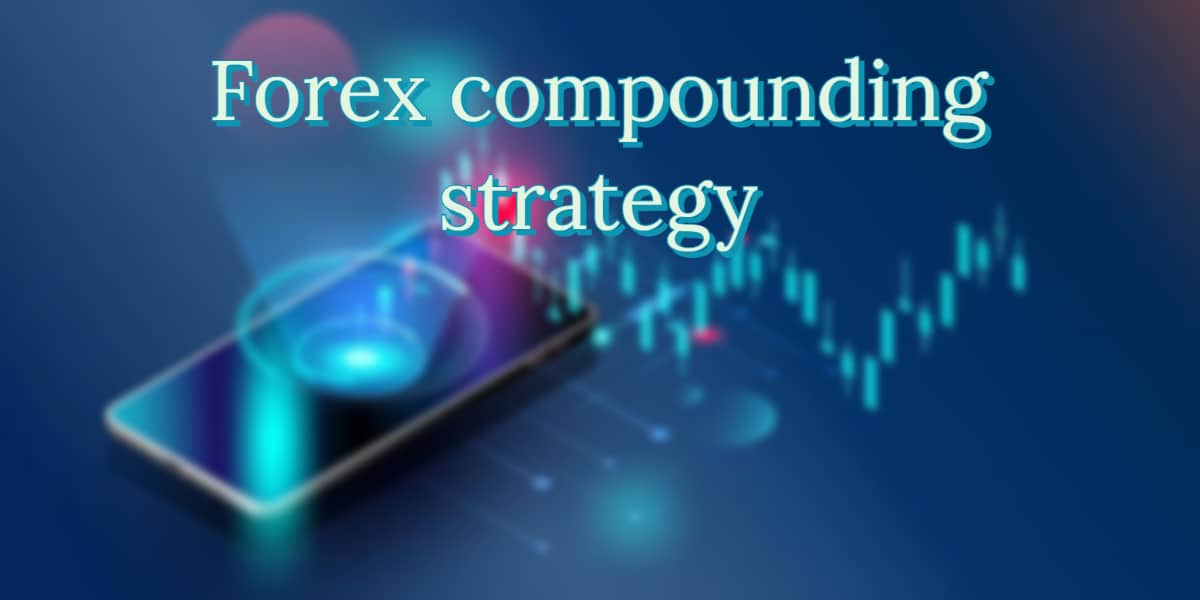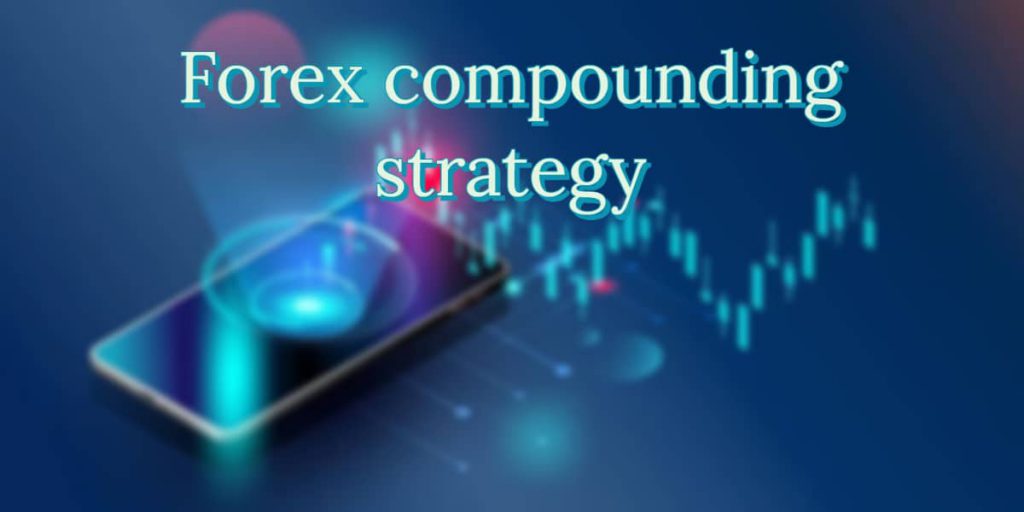
Forex compounding strategy – how to use it
Among so many strategies related to trading on financial markets, you might wonder which is the most common, the most obvious, for making more profits. This article presents your compounding strategy as one of the most obvious trading systems for reaping decent profits. And for a good example, we take Forex’s compounding strategy so you can see how this method works in a real market situation.
Compounding strategy in Forex – Key takeaways
- What is compounding in finance?
- What is a compounding trading strategy?
- Compound interest rate and forex compounding plan explained
- What is compounding in Forex
- Compounding and Forex carry trade
- The perks and downsides of Forex’s compounding strategy
- Forex compounding example
- Forex compounding calculator
So let’s start with the basic notions of compounding and interest so you can better grasp the whole concept of trading with this strategy.
What is compounding in finance?
There are two major ways of managing your money and profits in the market. These are compounding and non-compounding.
The latter is nefast to your traders since it means you gain the profits, but you spend them as soon as these are in your trading account.
In many ways, it’s even worse than having a losing trade. In general, we will try to explain what compounding in finance means by taking, for example, money deposited in your bank account.
When you deposit your funds in a bank account, you reap the interest on a monthly and yearly basis that the bank is using your money.
For instance, suppose you deposit $1000 in your bank account with an interest rate of %2 every year. Then you will earn $20 in interest during the first year.
With the compound interest over two years, you will earn $20.40. In this way, when the interest rate is based on your increasing balance, we have the snowball effect of accumulated interest.
From the other perspective, when you take out a loan or credit card debt, the bank charges you interest for borrowing the money.
In that case, this kind of interest can ruin you. You can find yourself paying off far more money and needing far more time to pay it off.
What is a compounding trading strategy?
Compounding in financial markets trading consists of the following. You make profits on the market, be it Forex, stock, or crypto. It doesn’t matter. And instead of spending the money, you reinvest the profits made on every previous trade into the next one. With the snowball effect, you gain a considerable amount over time.
Compound interest – Forex what is compounding in Forex
Now let’s apply this method to the Forex market. The compounding strategy in the Forex market represents the plan based on a goal of investment portfolio growth where risk tolerance and rewarding aspects work together.
Therefore it turns out to be a secure and easy strategy to grow your compounding Forex account sustainably. To make this happen, anytime you reap some profits, you need to put the money you earn during Forex trading into your portfolio.
That way, even the account with a meager deposit can considerably develop contrary to the minor gains you get using similar ventures. It is useful for beginner traders who aim to gradually grow their Forex account balances.
It releases you from the pressure of searching for money from outer sources. But what could be the downside of this method? The thing is that with the gains, you must be prepared for a certain level of risk. You can lose the money you reinvested as well as you can produce the snowball effect of profit. And just as in any other market, you can lose the capital abruptly.
This trading method is good for some traders but definitely not for those with a lack of patience.
In order to precisely see what would be the results of your compounding strategy in Forex, we suggest using the Forex Compounding Calculatorator. It is available on every Forex training online platform.
How to calculate compound interest?
You calculate compound interest by taking the profit from the compounding time frame. It can be daily, monthly, or annually, and add the time frames you are interested in.
For example, an interest rate of 10% compounded over a 2-year period with a $100 initial investment would result in a profit of $10 in the first year (on $100) and $11 in the second year (on 110 $), making a total of $121. Compare it to an investment without compound interest. You would only get $120 since you would get a fixed profit of $10 per year.
Forex carry trade and compounding interest.
Carry traders very often use the Forex compounding strategy. As a carry trader, you should take into account the Forex compound interest rate forecast and differential during the specific trading time frame.
If differential and forecast work for you and look favorable, the next thing to consider is compound interest. Let’s see what carry trade is and how compound interest affects the success of carry trade.
Carry trade is mainly used by Forex traders who trade larger amounts. Generally, this sort of trading consists of going short for the currencies with the lowest interest rate and vice versa, going along with those with the highest interest rate.
The trading positions are held for an extended period in order to benefit from the differential of this interest rate.
Popular currencies for carrying trade are EUR/JPY, AUD/JPY, AUD/USD, and NZD/JPY.
Carry traders tend to compound the interest on a daily or monthly basis in order to grow the returns.
But they can be subject to varying returns due to fluctuations in interest rate differential. If the differential rate widens, it will be the move in the trader’s favor.
The trader benefits from it in the upcoming compounding period. But if the differential rate narrows, the trader then receives lower returns.
Now let’s see a quick example.
If a Forex trader aims to trade a pair with an annual differential of 4.4%, it can lead to a return of 4.4898% if the rate is compounded on a monthly basis. The annual return will be 4.4980% if the interest is on a daily basis.
Compounding trading plan and the rule of 72
In order to show you better the power of compound interest, we will look at the rule of 72.
The rule of 72 is a simple way to determine how long it will take to double an investment, given a fixed annual rate of return.
The rule states that the number of years it takes to double your money is approximately equal to 72 divided by the expected annual return, expressed as a whole number (not a percentage).
So if you expect your investments to grow at a rate of 8% per year, it will take about nine years (72/8) for them to double.
Of course, this is a rule of thumb and not an exact science. Nonetheless, it can be useful for quickly estimating how long your money will take to grow. And it can be particularly useful for comparing different investment opportunities.
For example, let’s say you’re trying to choose between investing in a stock that’s expected to earn 10% per year and a bond that’s expected to earn 5% per year.
Using the rule of 72, you can estimate that it would take around 7.2 years for your money to double with stock investing (72/10) and 14.4 years for bond investing (72/5 ).
So, in this case, investing in stocks would be the best option taking the return as the only criterion because it would take less time for your money to grow.
Of course, there are other factors to consider when making investment decisions.
But the rule of 72 can be a useful tool for quickly estimating how long your money will take to grow.
How does the rule of 72 work?
The rule of 72 works by taking the number 72 and dividing it by the expected annual return on your investment. The resulting number is approximately equal to the years it takes for your money to double.
For example, if you expect your investments to grow at a rate of 8% per year, it will take about nine years (72/8) for them to double. Similarly, if you expect a return of 6% per year, it will take you about 12 years (72/6) to double your investment.
Forex compounding strategy – Final Thoughts
Forex compounding strategy represents an excellent method in trading to make considerable gains without exposing yourself to significant risks.
It allows you to progressively grow your account balance by reinvesting small sums consistently.
This strategy decreases the risk of big losses since the Forex market is prone to big price fluctuations. It spares you from the need to look for outside trading funds.
Moreover, it’s a kind of proper money management technique that enables you to track your investments better and have better control over them. In that way, you are in a position to make better decisions in the market.
Finally, it’s an attractive trading method for investors looking for long-term gains and consistent financial success on Forex.






